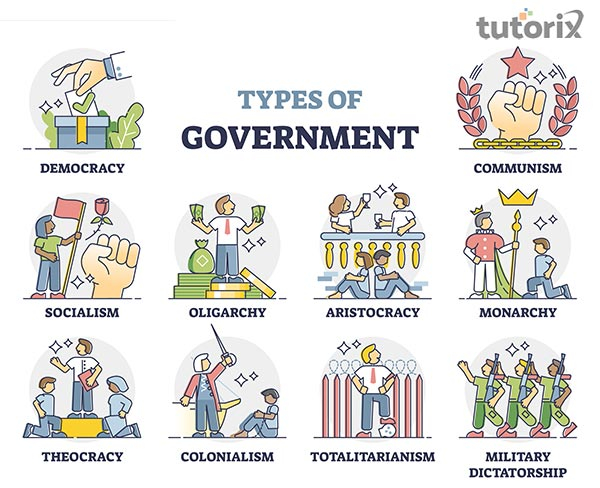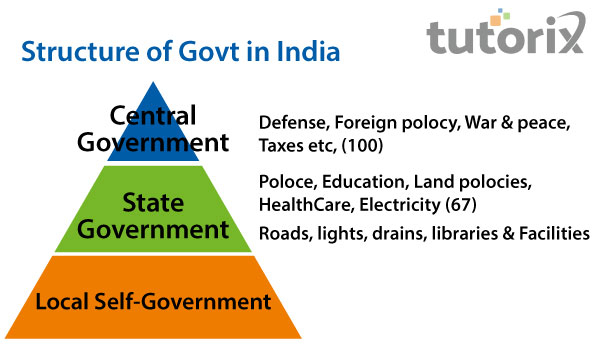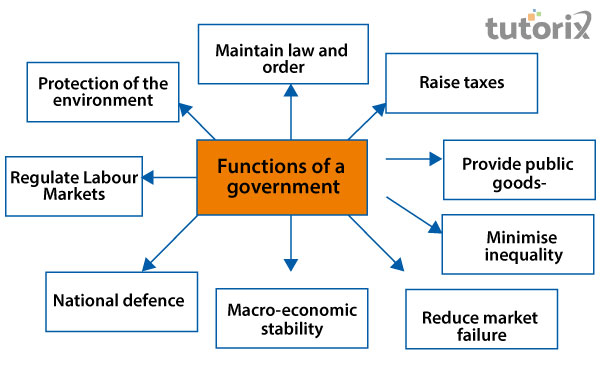

A government consists of the system of institutions, laws, sanctions, and customs through which a society seeks to manage the nation and state. The government relies in part on public opinion or decision to continue functioning. The government is the authority that creates and enforces laws within a country or community. It is typically composed of elected officials who represent the people living within that jurisdiction. The government can also be divided into different branches, such as defense, education, healthcare, and infrastructure each with its own set of responsibilities.
A government is the system by which a country or other area is governed. It is typically made up of different levels, each with different powers. The government may be run by a single person, known as a dictator, or it may be made up of multiple people, who work together in a system known as democracy.
The primary purpose of a government is to protect the rights and property of its citizens and to provide for the common defense. Government also provides public goods and services that individuals cannot efficiently provide for themselves, such as roads, police protection, etc.
Each government has its strengths and weaknesses, and there is no perfect government type. It is up to each country to decide what type of government is best for them.

Figure 1: Types of Government
There are three main types of governments:
Democracies
Monarchies
Dictatorships.
Democracies are governments in which the people have a say in the decisions that are made. India is the best example of a democratic government. In a democracy, the people elect their leaders and have a say in the decisions made by the government. This type of government is great for ensuring that everyone has a voice in the decisions made about the country. However, it can be difficult to get everyone to agree on a single course of action, which can lead to delays in decision-making. This type of government is usually fair and just, but it can be slow to make decisions.
Monarchies are governments in which a king or queen rules. This type of government can be very efficient, but it can also be unfair and unjust.
Dictatorships are governments in which one person has all the power. This type of government can be very fast and efficient, but it can also be very unfair and unjust.

Figure 2: Structure of Indian Government
Indian government is one of the oldest democracies in the world. It is a federal form of government with a parliamentary system. The Constitution of India is the supreme law of the land. It lays down the framework demarcating fundamental political principles, procedures, and powers of the government. Federalism in India refers to the distribution of power between the Union government and the state governments.
The Constitution of India distributes legislative powers between Parliament and the state legislatures. It also enumerates the subjects over which each level of government has executive authority. India has a three-tier system of Panchayati Raj institutions (village, intermediate, and district level), through which it decentralizes administration, having democratic control and accountability at each level.
There are many pros and cons to democracy, as it is the most popular form of government around the world. India is the largest democracy, and its government has been both praised and criticized for its policies. On the plus side, democracy encourages freedom and liberty and allows for public participation in the political process. It also helps to promote equality and social justice.
However, democracy can also be chaotic and inefficient, and some argue that it does not always protect the rights of minorities.

Figure 3: Functions of Government
A government is responsible for a lot of things. Here are some of the most important functions of a government:
Providing security: The government is responsible for protecting its citizens from external and internal threats. This includes maintaining a standing army, police force, and intelligence agencies.
Making and enforcing laws: The government makes laws that everyone in the country must follow. It also has the power to enforce those laws.
Collecting taxes: The government collects taxes from its citizens to fund its various activities and programs.
Providing public goods and services: The government provides various goods and services that benefit all citizens, such as education, healthcare, infrastructure, and environmental protection.
Regulating businesses and industries: The government regulates various businesses and industries to protect consumers, promote fair competition, and prevent monopoly.
Redistributing wealth: The government redistributes wealth through programs like welfare and food stamps. This helps to reduce inequality and improve the standard of living for the poorest citizens.
The government is composed of the following three components
Executive
Legislative
Judiciary.
The Executive branch is responsible for carrying out the laws and executing the policies of the government. The President is the head of the executive branch.
The Legislative branch is responsible for making laws.
The Judiciary branch is responsible for interpreting and applying the law.
There are many pros and cons to having a government as stated in the following table:
table| Pros | Cons |
|---|---|
| One of the main pros is that a government is necessary to maintain order within a society and protect the rights of its citizens. | One of the main cons can be that a government is an unnecessary institution that only creates bureaucracy and corruption. |
| A government can create laws and regulations that help to keep people safe and ensure that they are treated fairly. | A government can misuse its power to fill its own pockets or gain political advantage |
| A government can also provide essential services such as healthcare, education, infrastructure, etc. | A government can also be inefficient, creating red tape and bureaucracy that gets in the way of people getting things done |
There are many different types of government, each with its strengths and weaknesses. The best type of government for a particular country depends on the specific needs and circumstances of that country. Some countries may do well with a monarchy, while others may be better off with democracy. There is “no single best” type of government, but some forms of government are better suited to certain countries than others.
A government is a complex entity, and there are many different facets to it. In conclusion, the government is an important part of our society, and it plays a vital role in maintaining order and stability. There are many different levels of the government, and each level has its specific functions. The government is responsible for protecting our rights, providing services, and ensuring that our country runs smoothly.
Q1. What is the role of the government?
Ans. The role of the government is to serve and take care of the people. It has three main roles: Setting the legal system, upholding public order, and implementing national policy with responsibility for matters on the general welfare
Q2. Which type of government one would prefer and why?
Ans. Majority would probably prefer a democratic government. A well-functioning democracy operates as a system of full representation for the citizens of the country, ensuring that every person has an equal opportunity to participate in politics and that all adults have an equal say in how the country is governed
Q3. Do you think it is important for people to be involved in decisions that affect them?
Ans. Yes, society needs to be involved in decisions that affect them. The first reason is that every individual in society provides a different perspective and you need all the perspectives so you can make qualified decisions. The second reason for it being important for people to be involved in decision-making is that those decisions impact their lives, so they deserve to have a say.
Q4. Name two essential features of a democratic government
Ans. A democratic government is a system of government that empowers the people or citizenry to decide policy thus choosing their political leaders. The first broad feature of this type of government is transparency. Everyone involved will have the information needed to make substantial decisions. In addition, the control over the society is vested in the people rather than an autocrat, king, emperor, or other specific small groups. Another essential quality of a democratic system is that power can be held by every person and minority group meaning that everyone has an equal say in what occurs as far as laws are concerne
Q5. Why do you think the government needs to make rules for everyone in the form of laws?
Ans. Laws govern a country or region. They also make rules for people in that area. You can have laws because not every place is the same. Your house has certain rules. The school you go to has certain rules, and the city you live in probably has laws as well. Governments establish different standards so everyone lives together in peace and gets what they want and need from life.
Q6. List how you think the government affects your daily life?
Ans. Education, public transportation, the postal service, police department, judicial system, regulating immigration, maintaining public property, improving public health, and providing public order and safety are all examples of the role of governments in one's life.